Back in the day most everything was produced locally, every community had its network of producers, who not only produced but were also knowledge depositories for processes, materials, local conditions etc, etc, etc
Back in the day.
More recently production has become remote, goods being produced in anonymous factories, transported across continents, through innumerate staging posts, and thereby not only severing the link between producer and customer, but meaning ever fewer people understand how things are produced.
But could evolving cultural, social and ecological understandings open the way for a return to local production?
With the exhibition New Urban Production Halle 14 Leipzig explore possible future realities.
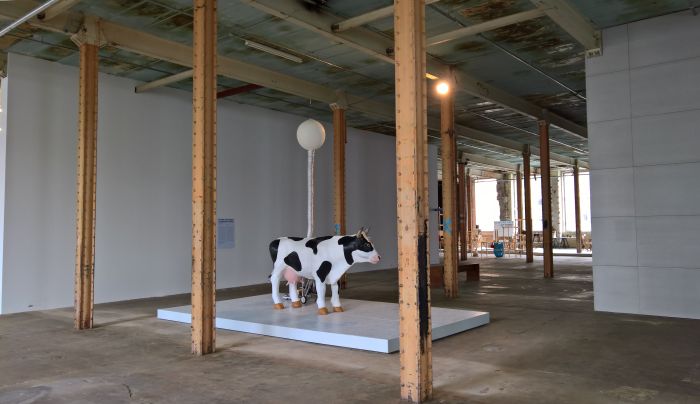
Among those factors which have had the most direct affect on the development of western society is without question industrialisation: the first industrial revolution initially drawing the rural poor to the new urban centres, and their factories, before industrial production became an essential necessity to maintain the new urban society thus formed, became a self-serving end to itself, too big to fail. The second industrial revolution saw an amplification of industrialisation's importance, ever more rapidly developing technology bringing ever more rapid change, gave rise to the industrial designer as a key cog in industry's mechanism, and also increasingly drew global capital into the system, making global society ever more dependent on the mass produced. Yet today as the speed of technological development progresses ever more rapidly, where does that leave industrialisation? Do we still need mass industrial production? Or does the combination of contemporary technology and contemporary understandings of the social, environmental, cultural and economic consequences of globalised mass production mean that the true third industrial revolution could see, after 250+ years of unassailable dominance, after 250+ years of being too big to fail, the end of mass industry? And if it does, what are our alternatives?
Curated by Leipzig based agency tri:polιs, New Urban Production presents projects by 9 international creatives/studios/collectives which approach possible answers, and which focus not only on production but the whole consumer chain from production over consumption and on to the post-functional use of that which is produced and consumed i.e. waste management.
Whereby we will, and in time honoured tradition, start at the end of the chain.

One of the most obvious characteristics of industrial production is waste. Which isn't to say earlier production and distribution systems didn't generate waste, is to say that in context of industrial production we just generate an awful lot more. Largely because industrial production doesn't care. Nor do industrial consumers.
Or better put, consumers didn't, ever more do, ever more are becoming aware of the problems and ever more design studios are considering solutions. The easiest solution is to produce and consume less, a solution which in many regards one of the underlying themes of New Urban Production; however we still have that which has until now accumulated. Waste which New Urban Production implies could/should be understood as a resource.
London based Studio Swine first reached an international public with their 2012 project Sea Chair in which they harvested plastic waste from the oceans and used that to create stools; with their follow up project, Can City, they, if you will, harvested aluminium cans from the streets of São Paulo and used them to create new products.
Whereas the contemporary concern about plastic waste is fully justifiable, plastic is only one of the myriad problems we have created for ourselves in our throw-away culture, through the loss of inherent value in the mass produced bred by industrialisation. Another is aluminium. Aluminium smelting requires obscene amounts of energy to free the metal from its ores and make it available for production, truly obscene amounts: so obviously humans, being infinitely wise as we are, decided to use this expensively and resource inefficiently won aluminium to produce single use throw-away objects. Genius! Thus the first thing Can City teaches us is not to consume food/drinks in non-recycled aluminium cans. The second thing it teaches us is that the waste of industrial production is a readily available resource for future production strategies: which may not be a new lesson, but is one which is becoming increasingly urgent, and as Can City very poetically demonstrates, is a readily available resource we can utilise via relatively primitive methods. And waste not just as a material. In Halle 14 Can City is represented by two aluminium stools created for a market trader from waste cans sourced from the market, and using other locally sourced waste material as moulds, including palm leaves, baskets and bricks. Thereby also making the project a nice example of, and strong argument for, that most Brazilian of arts: Gambiarra.
Waste however needn't be just the direct consequence of industry, can also be more indirect.
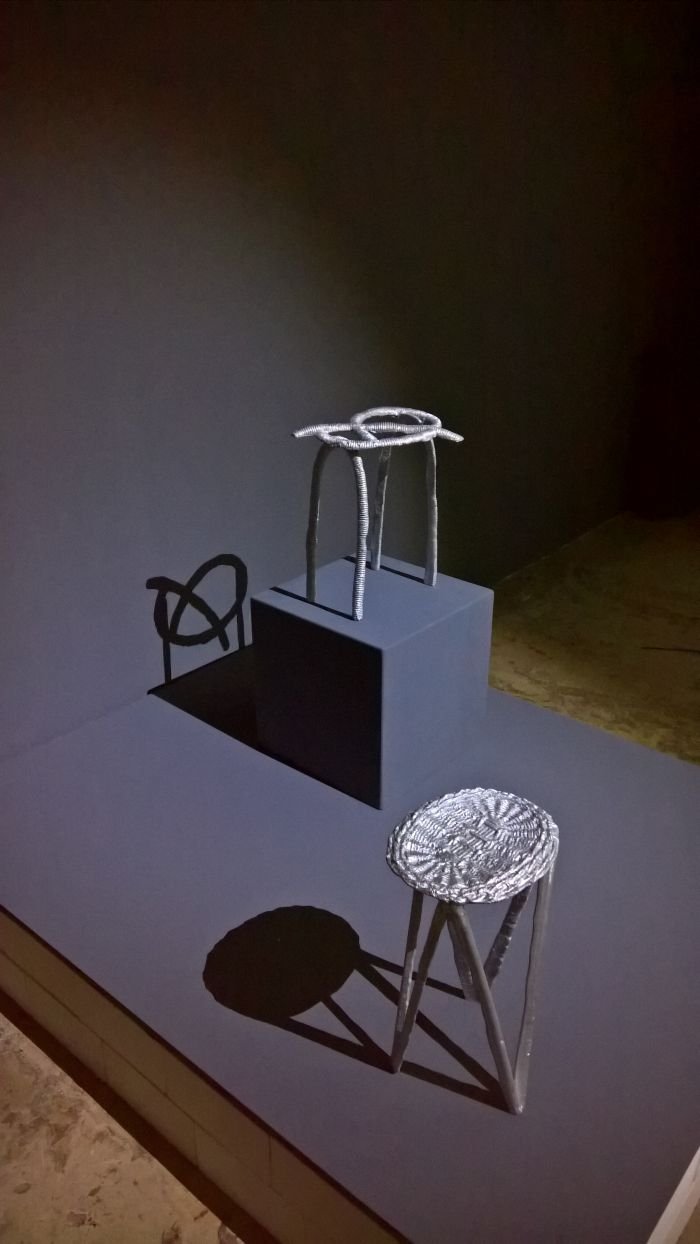
The so-called Granby Triangle is part of a Victorian suburb of Liverpool, a city defined by a rapid post-War industrial decline, an industrial decline which led to a decline in the housing stock, a decline which meant that by the 1980s the original buildings in Granby were increasingly being demolished to make way for new; a process a group of Granby residents resited, resistance which saw the development of Granby Community Land Trust who now manage four streets on a non-profit basis.
Among the projects realised within the context of the Granby regeneration action was the Granby Workshop for Architectural Ceramics which, effectively, took rubble and other waste building materials salvaged from the renovation of Granby houses and used that as the basis for so-called Granby Rock, a terrazzo-esque material originally intended for use as mantelpieces in the renovated houses, but which quickly became a material in itself. And a very nice example of building recycling.
And of the lo-cost, lo-tech, local format of which we very much approve, and a theme which runs through, almost, all the projects presented in New Urban Production. As does the associated consideration on the scale of future production, possible scales which not only force one to consider future economic models but also lead one to understand that through changes in our consumption behaviour we directly influence not only production but also distribution, and the less we distribute the fewer resources we need to invest in distribution. Driverless lorries may make ecological sense in terms of distribution networks, fewer lorries makes even more sense. And the easiest way to fewer lorries is local production and consumption.
Lo-cost, lo-tech also leads to the very obvious question of why develop new methods of production, why not just return to a production economy based on traditional craft?
The short answer is that the majority of the projects presented do just that.
The longer answer is that the majority of the projects presented do just that, albeit with an understanding of the nature and needs of contemporary society, the possibilities of contemporary technology, the ecological and cultural consequences of industrial production, and that how we produce is inextricably linked to how we consume.
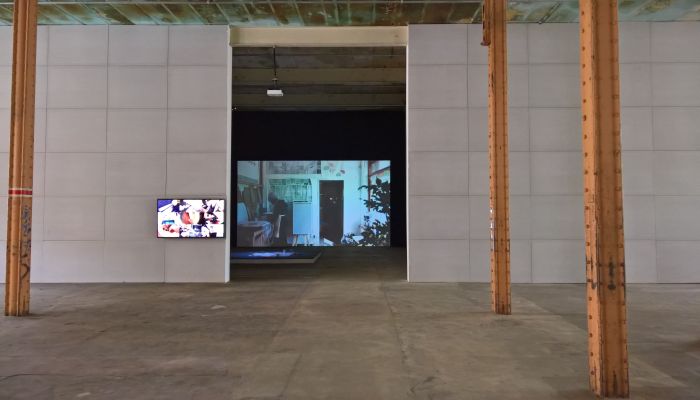
Contemporary consumption is ever more digital. You want something. There's an app for that. And an app forms a key component of the project Cow&Co by Ottonie von Roeder and Anastasia Eggers.
Exploring food consumption and contemporary relationships with the animals responsible, Cow&Co proposes a network of cows standing in urban spaces. When you need milk, an app informs you where your nearest cow is and how much milk she has available. You go to the cow, order and pay for your milk via the app, while a robotic milking machine collects and bottles your milk. All the necessary energy is provided by methane produced by the cow, and which is stored in a weather balloon. Clearly cows standing in urban spaces selling milk via an app is absurd. But any more absurd than farmers selling milk for less than the production costs so that you can buy cheap milk in a supermarket ? Or the global trade in milk? In 2017, for example, the EU exported 781,000 tons of skimmed milk powder and 394,000 tons of whole milk powder to third countries.* That's a million tons of milk powder. Which is a lot of wet milk.
And is a cow standing in a city waiting for you to need milk any more absurd than fast food delivery cyclists waiting in public parks, car drivers waiting on street corners or any of the other gig economy operatives who rely on you wanting something instantaneously via an app?
And beyond the gloriously Heath Robinson majesty of a methane powered mobile robotic milking machine, Cow&Co also raises some interesting questions on future consumption technology, not least, what does a fridge which autonomously orders milk on your behalf have to do with responsible animal husbandry? What does a fridge which autonomously orders milk on your behalf have to do with environmental responsibility? What does a fridge which autonomously orders milk on your behalf have to do with social responsibility? Why do we need fridges which autonomously order milk on our behalf? Or indeed any home appliance that autonomously orders goods?

As the centenary of Bauhaus Weimar approaches and with it reflections on the considerations on the necessity for new production systems which accompanied the school's founding, New Urban Production provides for an accessible, entertaining and highly informative overview of contemporary positions.
For all the fact that New Urban Production is being staged in the former Leipzig cotton mill, in a space constructed in 1889, which remains rooted in, and proud of, the heyday of industrial production, adds a certain legitimacy to the exhibition; underscoring as it does how far we've moved since then, that the society the space was created for is long gone, and thereby underscoring the argument for the necessity of new ideas, new ideas not just in terms of production, consumption and waste management, but also in terms of materials, the relationship between producer and consumer, between product and consumer, the role of the designer in consumption systems, and also the future of work, infrastructures, architecture, spatial planning and by extrapolation society.
If the positions presented in context of New Urban Production are the ones?
As an exhibition New Urban Production doesn't express an opinion, rather presents the projects with all their pros and cons, with all their logic and improbabilities, with all their advantages and disadvantages, as speculative, idealised, if viable, proposals for possible future realities, and in doing so lets them stand there as impulses, as the basis for a discourse and dialogue on the future of, on the future of, of....
......although the word "Urban" features prominently in the exhibition title, we don't see the proposals as being purely urban. And although the word "Production" features prominently in the exhibition title, and as an exhibition it is certainly primarily concerned with production, for us the real focus of the exhibition is consumption.
And although all projects provide for critical reflections on contemporary and future consumption, none fundamentally question consumption per se, none are fundamentally opposed to consumption, much more the positions are of responsibility, of the social and ecological responsibility of the individual and how that is defined by the decisions we make, the things we consume, and, and much as with the exhibition Buy Now, Pay Later at MAD Brussels, being confronted by the projects one is forced to reconsider ones own actions, and for all where, what and why one consumes.
And if we do that in an open and honest manner we automatically come back to the question of the contemporary validity of global industrial production. And if we question that, what are our alternatives?
It's been a long time since we had any.......
New Urban Production runs at Halle 14, Zentrum für zeitgenössische Kunst, Leipziger Baumwollspinnerei, Spinnereistr. 7, 04179 Leipzig until Saturday December 8th.
2509.2018



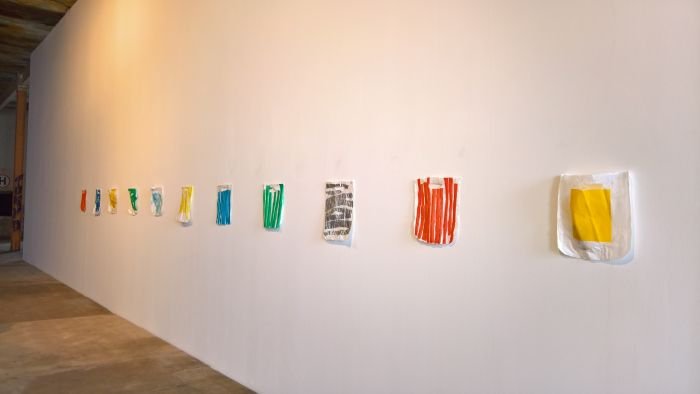


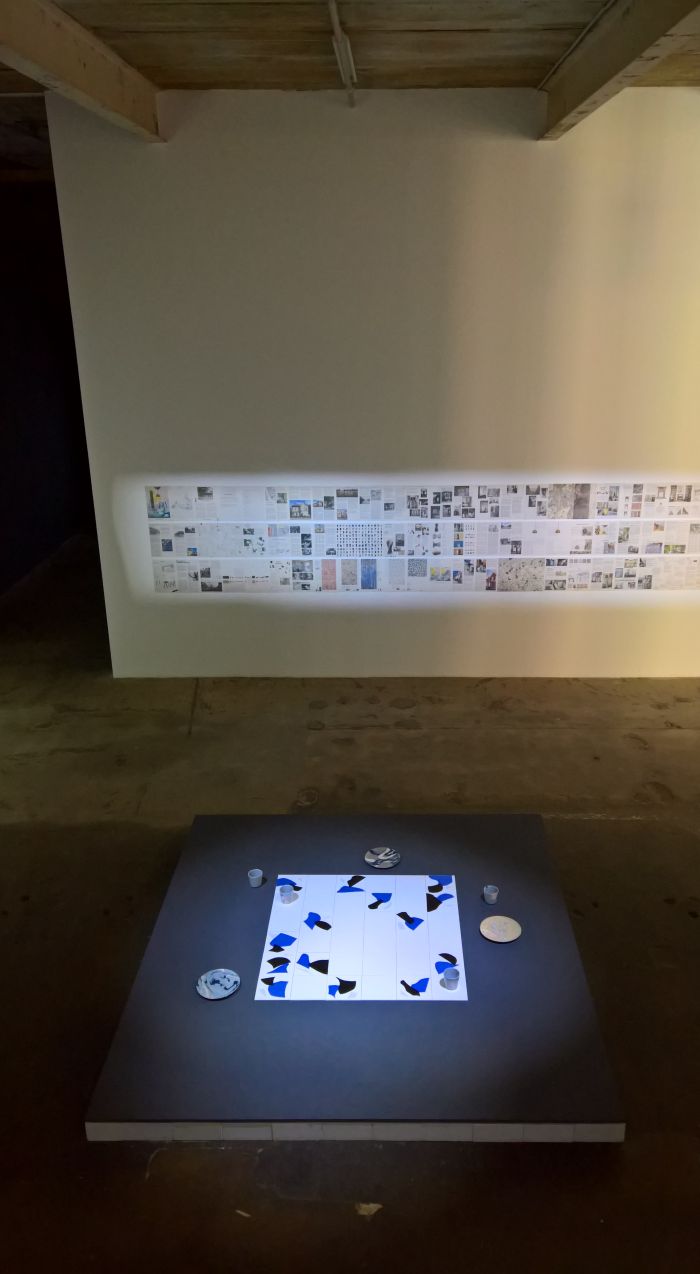
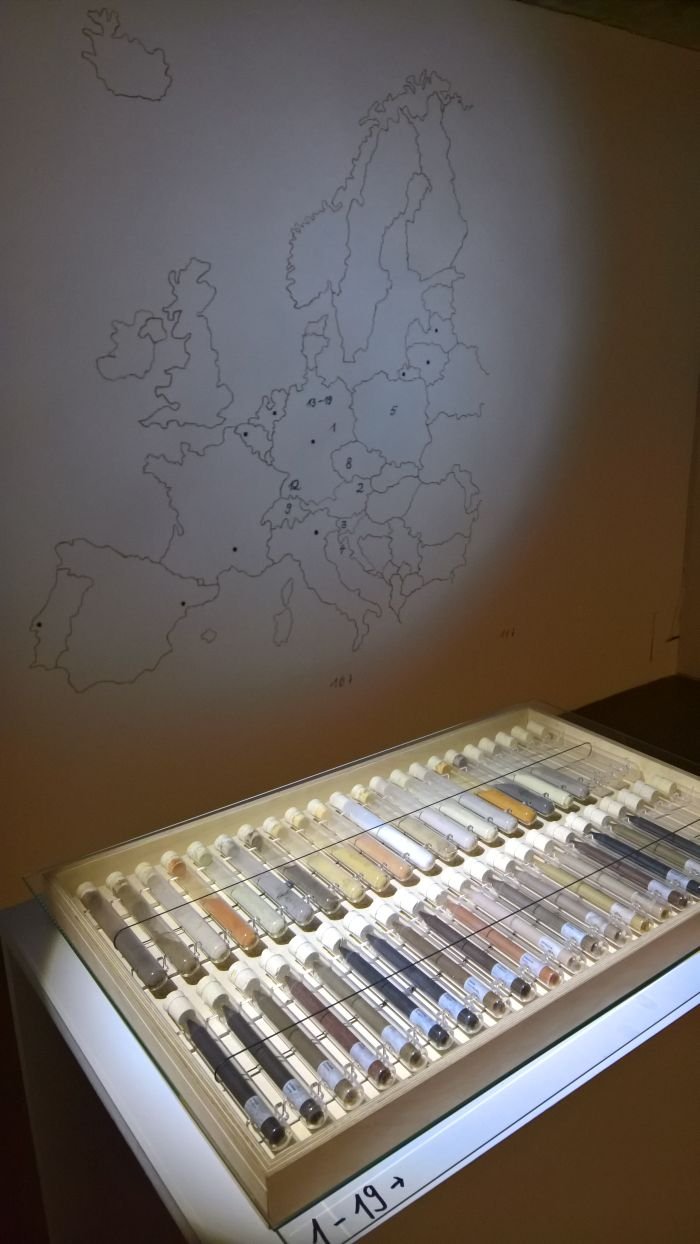




Full details can be found at www.halle14.org